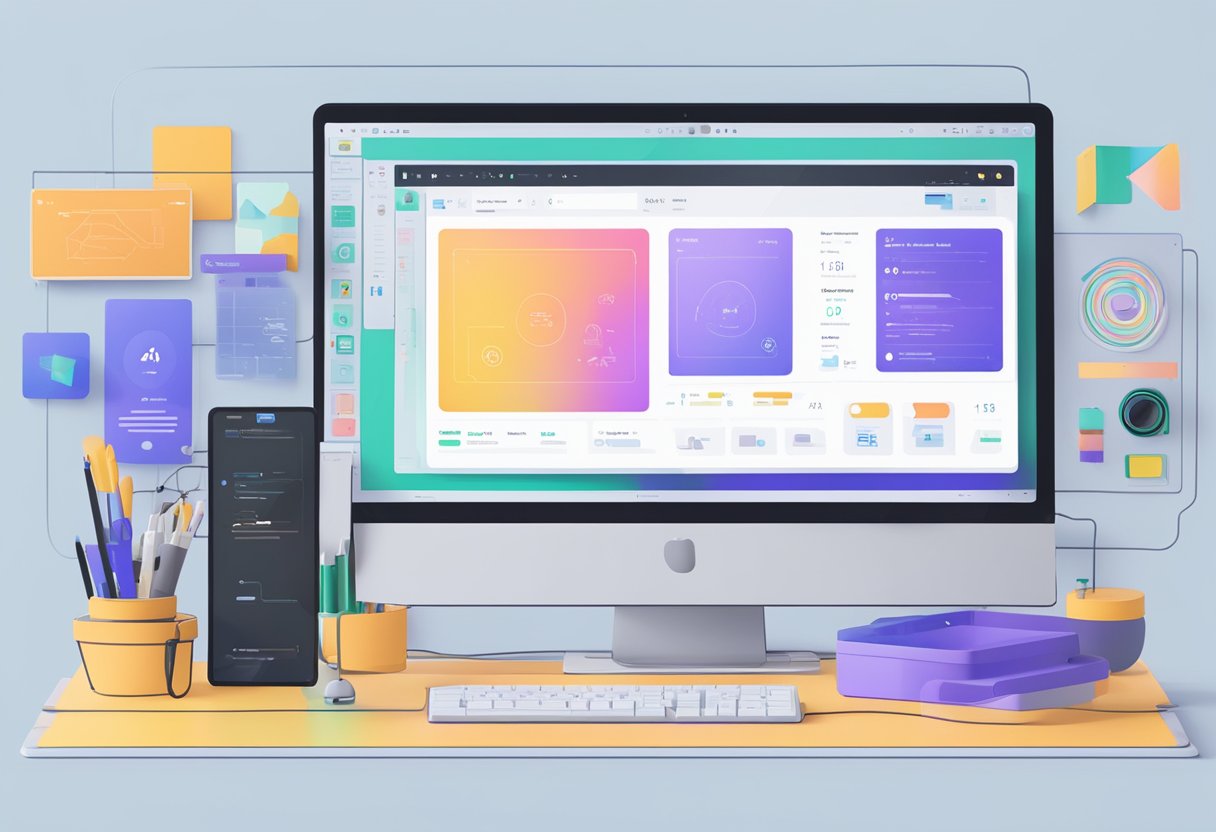Figma is a powerhouse design tool celebrated for its versatility and ease of use. While its primary focus is on creating straightforward, collaborative designs, Figma also offers advanced features for creating unique design elements, such as curving text.
This guide walks you through how to curve text in Figma and explains how to leverage this feature to add flair to your designs.
Why Curve Text in Figma?
Curved text can add a dynamic and visually appealing element to your designs. Whether you’re working on a logo, a header for a marketing campaign, or any creative project, curving text can:
- Create Emphasis: Draw attention to specific design elements.
- Enhance Visual Hierarchy: Make your designs more organized and readable.
- Add Personality: Bring uniqueness to your project, setting it apart from traditional, linear designs.
How to Curve Text in Figma: Prerequisites
Before curving text in Figma, ensure you have the following:
- A Figma Account: Sign up for free if you haven’t already done so.
- A Design Project: Open or create a project where you want to add curved text.

- Basic Understanding of Figma Tools: Familiarity with Figma’s interface will make the process smoother.
How to Curve Text in Figma: A Step-by-Step Guide
Figma doesn’t have a native text-on-path feature, but you can achieve curved text using workarounds. Here’s how:
Using the Arc Plugin

The Arc plugin is one of the most popular plugins for curving text in Figma. This plugin allows designers to curve text upward, downward, or into a circle. To use the Arc plugin, follow these steps:
- Select the text layer you want to curve.
- Open the Plugins menu and search for the Arc plugin.
- Adjust the slider to set the curve angle and preview the result.
- Click Apply to apply the curve to the text layer.
Using the Circular Text Plugin

Another plugin designers can use to curve text in Figma is the Circular Text plugin. As the name suggests, this plugin allows designers to create circular text by wrapping text around a circle. To use the Circular Text plugin, follow these steps:
- Select the text layer you want to curve.
- Open the Plugins menu and search for the Circular Text plugin.
- Adjust the slider to set the circle radius and preview the result.
- Click Apply to apply the curve to the text layer.
Using the Toolbar
Figma also offers a toolbar that designers can use to format text, including curving text. To curve text using the toolbar, follow these steps:
- Select the text layer you want to curve.
- Open the left sidebar and go to the Text section.
- Click on the Curve button to open the curve options.
- Select the curve type you want to apply to the text layer.
- Adjust the slider to set the curve angle and preview the result.
Designers can also use the toolbar to format text, including changing the font size, line height, font family, typeface, bold, and more. They can also use the toolbar to align text horizontally and vertically.
In conclusion, Figma offers several ways for designers to curve text, including using plugins, the toolbar, or keyboard shortcuts. By using these tools, designers can create unique logos, badge logos, and icons, or add special effects to their designs.
Tips for Perfecting Your Curved Text
- Experiment with Fonts: Different fonts can create varying effects when curved.
- Keep Readability in Mind: Ensure your text remains legible, even on a curve.
- Use Gridlines: Align elements precisely for a professional look.
- Practice Patience: Achieving a perfect curve may require time and adjustments.
Advanced Techniques for Curving Text
If you’re looking to take your curved text designs to the next level, consider these advanced techniques:
- Combine Multiple Paths: Create layered text effects by curving text on overlapping circles.
- Blend with Graphics: Integrate curved text with other design elements, such as icons or illustrations.
- Use Plugins: Explore Figma plugins like “Text on Path” to automate the process. Note that plugins may have limitations compared to manual adjustments.
Common Challenges and Solutions
1. Text Alignment Issues
Solution: Use the Rotate tool to fine-tune the placement of each letter.
2. Inconsistent Spacing
Solution: Adjust letter spacing in the Text panel to ensure uniformity.
3. Complex Paths
Solution: Stick to simple shapes like circles or ovals for easier text placement.
Why Professional Services Matter
Creating curved text and other intricate design elements can be time-consuming, especially if you’re working on a tight deadline or a large-scale project. This is where professional services like FigmaFy come in.
How FigmaFy Can Help

At FigmaFy, we specialize in turning your Figma designs into a fully functional website and digital experiences. Our team can:
- Streamline Complex Design Elements: Achieve precise curved text effects and other advanced features.
- Optimize Designs for Web Development: Ensure your designs are web-ready and responsive.
- Save Time: Focus on your creative vision while we handle the technical details.
Conclusion
Curving text in Figma is a creative way to elevate your designs and capture attention. With the right approach and tools, you can achieve stunning results that align with your vision. Whether you’re a seasoned designer or just starting out, mastering this technique will add a valuable skill to your repertoire.
Need help bringing your designs to life? Contact FigmaFy to turn your Figma projects into professional-grade websites that stand out from the competition.



